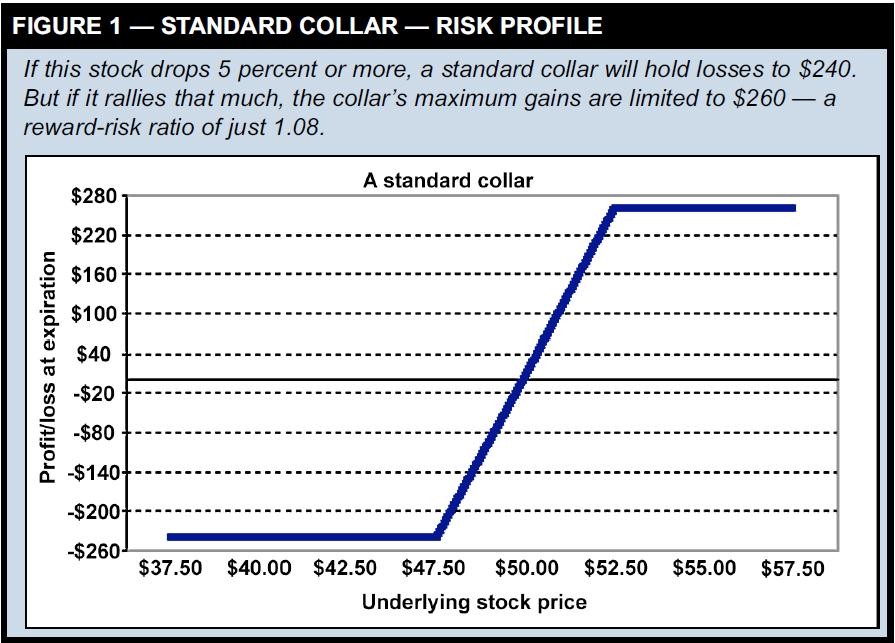Collar Definition Example
Post on: 12 Апрель, 2015 No Comment

What it is:
A collar option strategy, also known as a hedge wrapper, is used to lock in the maximum gain and maximum loss of a stock. To execute a collar, an investor buys a stock and an out-of-the-money put option while simultaneously selling an out-of-the-money call option .
How it works/Example:
In a collar. the investor has a long position in a stock. so he benefits when the shares increase in price. To implement a successful collar strategy, the strike price for the call he’s selling needs to be above that of the put he’s buying. Both options should also have the same expiration date.
For example, say you own 100 shares of Company XYZ at $45. To implement a proper collar, you buy a put with a strike price of $43 and sell a call with a strike price of $47. The expiration date on both options is the same.
If XYZ rises above $47, the buyer of the call will exercise his option. and you must sell him 100 shares of XYZ at $47, even if shares are selling for more than that in the market. Regardless of how high the price goes, you make a $2 profit.
If Company XYZ falls below $43, then you only lose $2 a share, because you have the right to sell 100 shares of XYZ at $43, even if they are trading below that price.
If XYZ is trading between $43 and $47 when the expiration date arrives, the options expire worthless, and you keep your shares at the current market value .
Note that the collar ensures you can’t lose or make more than $2 on the trade no matter how high XYZ rises or how low it falls. You have a stop on the upside. but you also have a stop on the downside .

Why it Matters:
The primary benefit of a collar option is to limit downside risk. Collars also limit profits on the upside. which is why they are most frequently used during down markets.
Collars are a conservative strategy and are generally implemented to protect profits, not generate them. Investors need to always be assessing the risk/reward ratio of every position they’re considering. Fortunately, the risk/reward scenario for collars is clear: It’s low risk, low reward.
On the other hand, if your threshold for risk is low, collars are a fine way to protect your portfolio from the unexpected.
[Learn more about collar option strategies in the InvestingAnswers feature: Add Protection Against a Market Downturn With Collar Options .]














